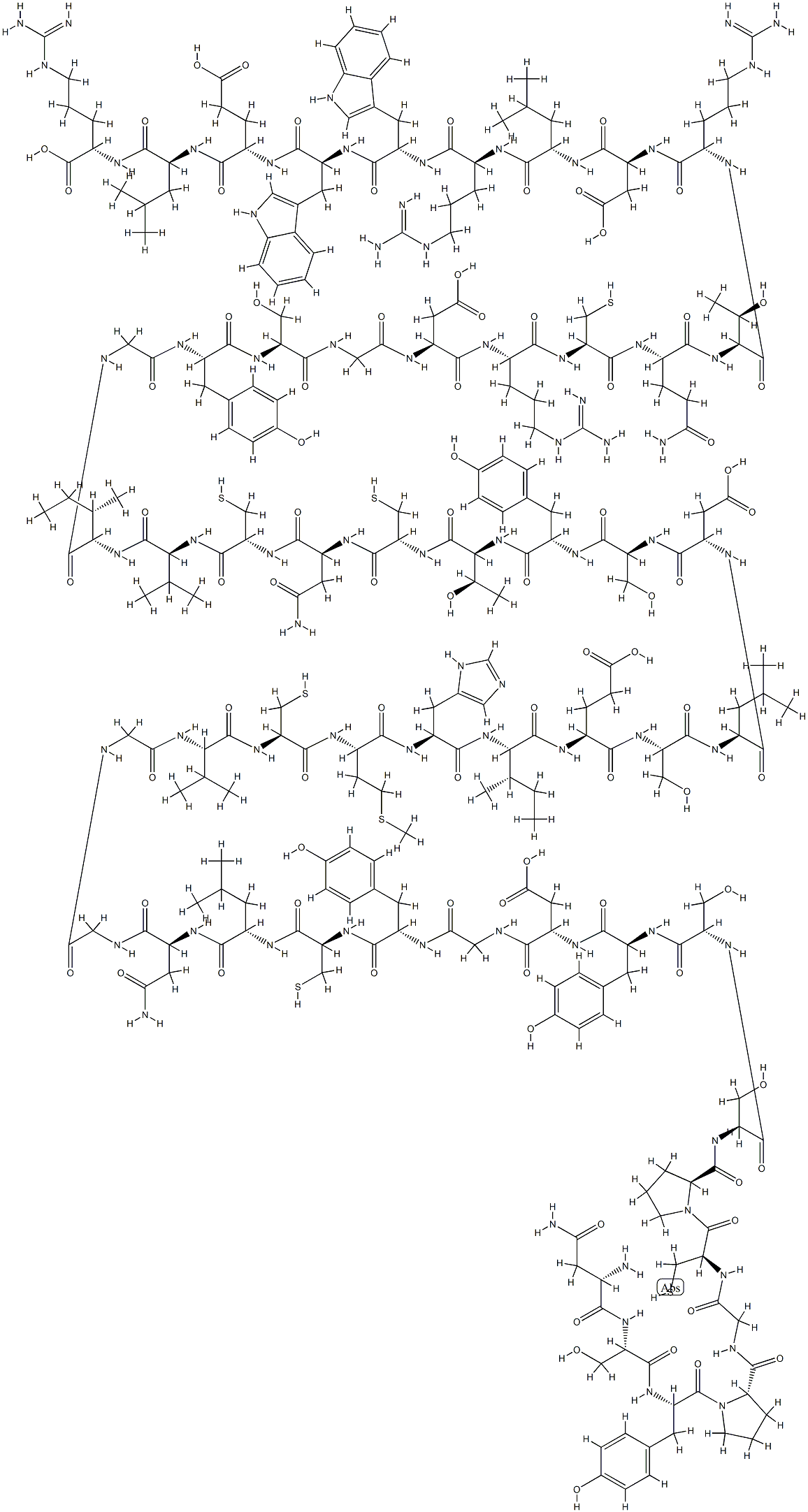EPIDERMAL GROWTH FACTOR, HUMAN
Synonym(s):EGF;Epidermal Growth Factor;Epidermal Growth Factor, Human, Recombinant, E. coli;EGF, Human, Recombinant, E. coli;EGF, Murine Submaxillary Glands, Receptor Grade
- CAS NO.:62229-50-9
- Empirical Formula: C257H381N73O83S7
- Molecular Weight: 6045.66934
- MDL number: MFCD00132565
- EINECS: 263-468-7
- SAFETY DATA SHEET (SDS)
- Update Date: 2023-10-30 17:09:20

What is EPIDERMAL GROWTH FACTOR, HUMAN?
Description
Epidermal growth factor (EGF) is a polypeptide ligand for the EGF receptor (EGFR; ). It is synthesized as a 1,217 amino acid glycosylated transmembrane precursor protein from which mature, soluble EGF is formed by proteolysis. Mature EGF is a 53-amino acid polypeptide that contains six cysteine residues, which form three intramolecular disulfide bonds essential to the biological activity of EGF. EGF is synthesized in the brain, kidney, pancreas, small intestine, pituitary gland, and submaxillary gland and is found in various bodily fluids, including saliva, cerebrospinal fluid, blood, breast milk, and prostatic fluid. Binding of EGF to the EGFR induces receptor dimerization, autophosphorylation, and intracellular signaling with roles in cell proliferation. In patients with early Parkinson’s disease and Alzheimer’s disease with amnestic mild cognitive impairment, low plasma EGF levels are predictive of future long-term cognitive decline. Plasma levels of EGF are reduced in pregnant woman infected with T. cruzi compared with uninfected pregnant controls. Exogenous application of EGF normalizes cortical GABAergic transmission and improves rotarod performance in the R6/2 transgenic mouse model of Huntington''s disease. Probiotic administration of E. coli engineered to secrete human EGF induces epithelial barrier restoration in a mouse model of intestinal ulcers. Immunization with human EGF induces an anti-EGF antibody response and increased survival in mice with EGFR-expressing tumors. Cayman''s EGF (human, recombinant) protein can be used for cell-based assay applications. This protein consists of 54 amino acids and has a calculated molecular mass of 6.3 kDa.
The Uses of EPIDERMAL GROWTH FACTOR, HUMAN
Epidermal Growth Factor (EGF) from murine submaxillary gland has been used as a mitogen, triggering the cell to commence mitosis, in a variety of cell lines. In tissue cultures, EGF acts to reduce or eliminate the requirement for serum and can be used in conjunction with other media additives and hormone. The working concentration for EGF is generally 0.1-10 ng/mL.
General Description
EGF (epidermal growth factor) is a potent growth factor that stimulates the proliferation of various epidermal and epithelial cells. Recombinant murine EGF is a 6kDa globular protein containing 53 amino acid residues, including 3 intramolecular disulfide-bonds.
Biochem/physiol Actions
EGF (epidermal growth factor) has been shown to inhibit gastric secretion, and to be involved in wound healing. EGF signals through a receptor known as c-erbB, which is a class I tyrosine kinase receptor. This receptor also binds with TGF (transforming growth factor)-α and VGF (vaccinia virus growth factor). EGF plays an important role in embryogenesis and cardiogenesis.
Properties of EPIDERMAL GROWTH FACTOR, HUMAN
| storage temp. | -20°C |
| form | powder |
| color | white to off-white |
| CAS DataBase Reference | 62229-50-9 |
Safety information for EPIDERMAL GROWTH FACTOR, HUMAN
Computed Descriptors for EPIDERMAL GROWTH FACTOR, HUMAN
New Products
Tert-butyl bis(2-chloroethyl)carbamate (S)-3-Aminobutanenitrile hydrochloride N-Boc-D-alaninol N-BOC-D/L-ALANINOL N-octanoyl benzotriazole 3,4-Dibenzyloxybenzaldehyde 4-Hydrazinobenzoic acid 1,1’-CARBONYLDIIMIDAZOLE R-2-BENZYLOXY PROPIONIC ACID 3-NITRO-2-METHYL ANILINE 4-IODO BENZOIC ACID 4-HYDROXY BENZYL ALCOHOL 4-(3-chloropropyl)morpholine phenylhydrazine hydrochloride (2-Hydroxyphenyl)acetonitrile 4-Bromopyrazole 5-BROMO-2CYANO PYRIDINE 5,6-Dimethoxyindanone 5-broMo-2-chloro-N-cyclopentylpyriMidin-4-aMine 4-methoxy-3,5-dinitropyridine 2-(Cyanocyclohexyl)acetic acid 2-aminopropyl benzoate hydrochloride 1-(4-(aminomethyl)benzyl)urea hydrochloride tert-butyl 4- (ureidomethyl)benzylcarbamateRelated products of tetrahydrofuran








You may like
-
 Epidermal Growth Factor from murine submaxillary gland CAS 62229-50-9View Details
Epidermal Growth Factor from murine submaxillary gland CAS 62229-50-9View Details
62229-50-9 -
 EGF, Human, Recombinant, E. coli CAS 62229-50-9View Details
EGF, Human, Recombinant, E. coli CAS 62229-50-9View Details
62229-50-9 -
 Epidermal Growth Factor from murine submaxillary gland CAS 62229-50-9View Details
Epidermal Growth Factor from murine submaxillary gland CAS 62229-50-9View Details
62229-50-9 -
 (9H-fluoren-9-yl)methyl (2,5-dioxopyrrolidin-1-yl) carbonate 82911-69-1 98.0%View Details
(9H-fluoren-9-yl)methyl (2,5-dioxopyrrolidin-1-yl) carbonate 82911-69-1 98.0%View Details
82911-69-1 -
 13057-17-5 95.0%View Details
13057-17-5 95.0%View Details
13057-17-5 -
 4-bromoaniline 106-40-1 99.0%View Details
4-bromoaniline 106-40-1 99.0%View Details
106-40-1 -
 5-bromo-2-chlorobenzoic acid 99.0%View Details
5-bromo-2-chlorobenzoic acid 99.0%View Details
21739-92-4 -
 15761-38-3 97.0%View Details
15761-38-3 97.0%View Details
15761-38-3